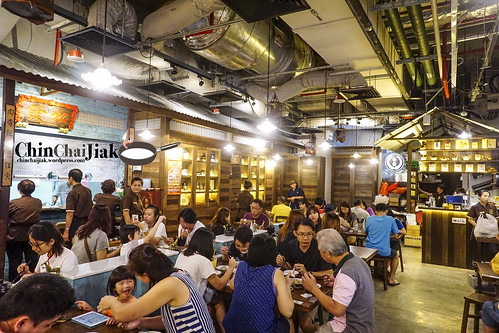The idea of forming grassroots organisations like Residents' Committees (RCs) and Citizens' Consultative Committees (CCCs) was to enable volunteers in the community to help the government in implementing its policies and reaching out to residents. Those who manage RCs and CCCs are invariably identified as supporters of the ruling party though many may be motivated to volunteer by a desire to serve the people in their community.
It is often lamented that an MP from a non-ruling party (NRP) taking over the running of a constituency from a ruling party MP has to countenance difficulties from RCs and CCS in the implementation of their programmes. Both MPs and NCMPs have expressed that major obstacles still remain for opposition parliamentarians (Click HERE). One of these obstacles is in tapping on state funds which are set aside for improving infrastructural and recreational facilities for the benefit of residents in their constituencies which include covered walkways, footpaths, cycling tracks and playgrounds.
In one parliamentary session, the Minister for National Development ("MND") was asked for the guidelines for the utilisation of the Community Improvement Projects Committee (CIPC) funding (Click HERE). In his reply, the Minister answered that "CIPC funds are disbursed through the CCCs as they are close to the ground and will be better able to decide on the projects which will be most useful for the local residents. The CCCs are given flexibility to assess the relevance of any proposal and to prioritise them for implementation so that the CIPC funds are optimally utilised. The operating principle for the CCCs is to ensure that the approved CIPC projects are useful, functional, represent value for money, freely accessible to the community and properly planned."
In short, CCCs have the power to decide if an elected MP may go ahead with his plans to improve infrastructural and recreational facilities for his residents. Given that CCCs are not apolitical in character, this arrangement poses a serious obstacle to an elected NRP MP's programmes to benefit his constituents. The question that arises is whether funds meant for community improvements should be disbursed to CCSs if the CCC and the MP do not share the same political affiliation. Obviously, if all political contests are confined only to the election period and are not carried over into the term of whoever may be elected as MP to the detriment of the constituents, there will be no necessity for us to review the present arrangement.
However, as we all know, political contests tend to spill into even the most mundane things that CCCs do for their residents. Until grassroots leaders learn to rise over politics and are no longer seen to be taking sides with the ruling party, there is a need to ensure that these community improvement funds do not become an instrument of politics. As a step towards developing a more positive political culture, why not let the MND decide on the applications to use such funds by all MPs?

